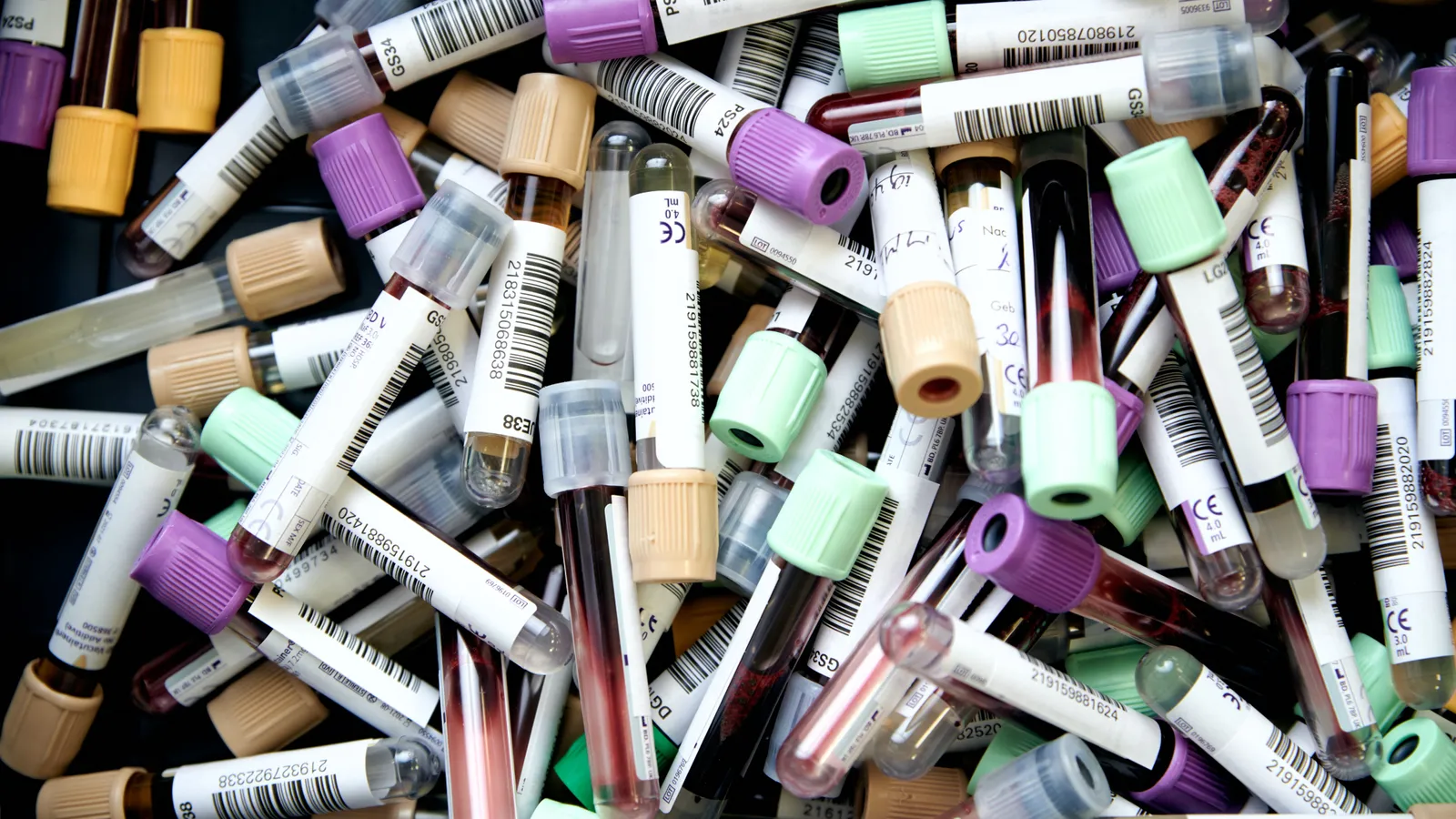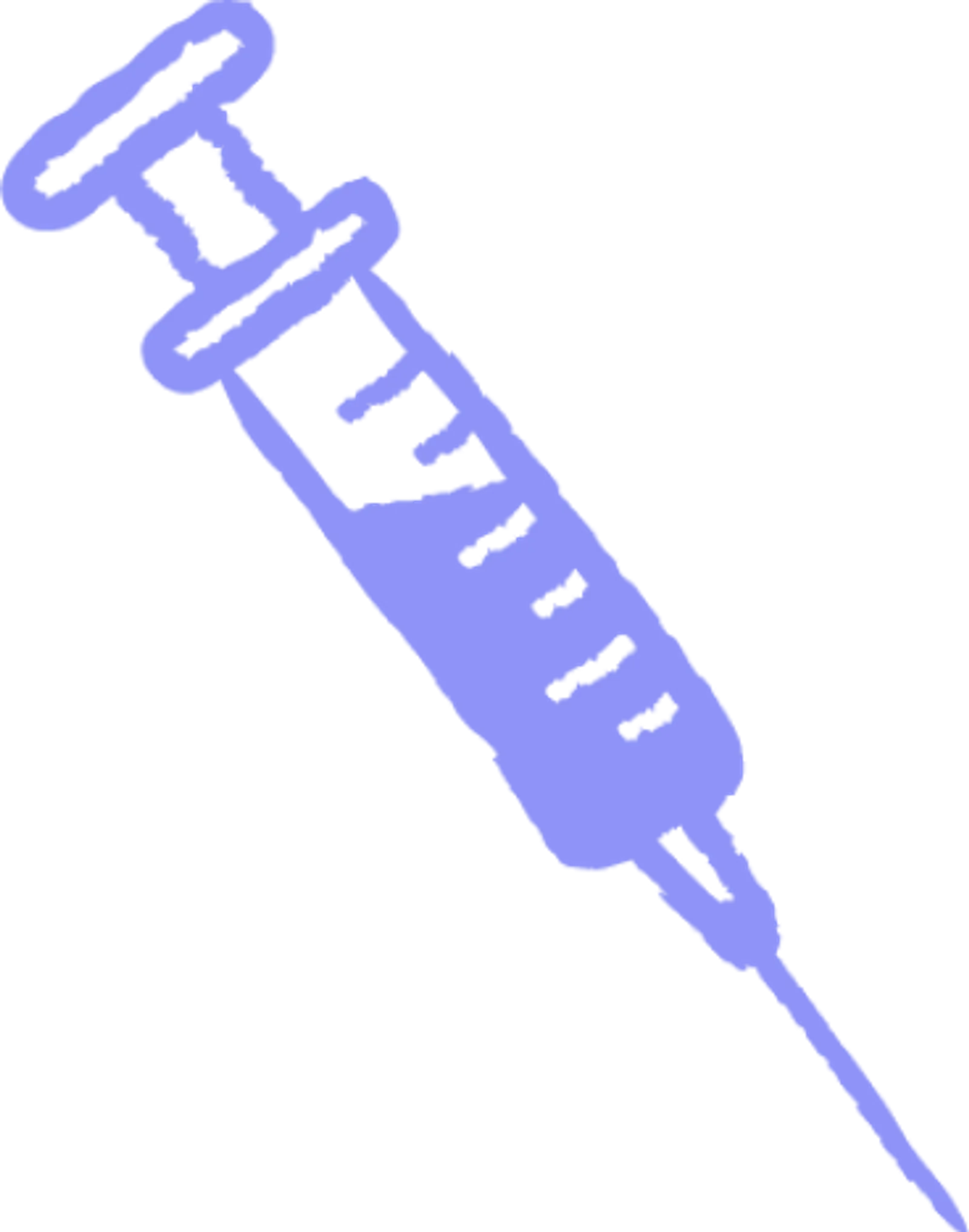Plasma 101
Who: Eligible donors between 18 and 63 can earn up to $560 a month in NY and up to $770 a month in FL.
What: Plasma is the yellow part of your blood that replenishes naturally.
Where: Queens, Brooklyn, The Bronx (NY), and Ft. Pierce (FL).
Why: Get paid to donate and help treat bleeding disorders, immune deficiencies, and more.
When: No appointment needed—walk in anytime before closing.
Plasma Donation: A Comprehensive Guide

Plasma Donation: A Comprehensive Guide
Plasma donations save lives. Yet the process raises questions for both first-time and experienced donors. By comprehensively outlining every aspect of plasma donation, this guide empowers readers to confidently contribute to lifesaving therapies. Readers can expect straight-forward information on donation requirements, step-by-step processes, compensation details and more so they can make informed, health-conscious decisions about this meaningful way to serve others.
Plasma donation is a safe, uncomplicated way for healthy adults age 18-65 who meet eligibility requirements to donate plasma up to twice weekly. The 1-2 hour automated process extracts plasma containing antibodies and clotting factors used in lifesaving therapies. Donors providing this scarce resource receive around $30-50 per session as compensation for their time and commitment.
Understanding Plasma Donation:
Title | Description |
What is Plasma? | A clear, straw-colored liquid part of blood, comprising about 55% of total blood volume. Contains water, proteins, glucose, clotting factors, electrolytes, hormones, and gases. |
Medical Uses of Plasma | Used in treating rare diseases like hemophilia, primary immunodeficiencies, emergency medicine, trauma, surgery, burn victims, and septic shock. |
Donors must be 18-65 years old (16-17 with consent in some states), weigh at least 110 pounds, be in robust health, drug-free, and without recent tattoos or piercings. | |
Pre-Donation Guidelines | Let’s talk about the do’s and don’t of plasma donation. Stay hydrated, eat nutritious meals, avoid alcohol, get sufficient sleep, and wear comfortable clothing. |
The Donation Process | Involves registration, health checks, and plasmapheresis (1-2 hours per visit). |
Safety and Hygiene Protocols | Rigorous sanitization, sterile equipment, and close monitoring of donor well-being. |
Aftercare Post Donation | Rest, hydrate, avoid strenuous activities, and consume nutritious meals. |
Long-Term Health Considerations | Maintain a healthy lifestyle, allow 48 hours between donations, and consume protein-rich foods. |
Understanding Plasma and its Medical Significance
What is Plasma?
Plasma is the clear, straw-colored liquid portion of blood that makes up about 55% of total blood volume. It is composed mostly of water (92%), along with proteins, glucose, clotting factors, electrolytes, hormones, and gases.
Plasma serves several vital functions within the human body. It transports nutrients, hormones, proteins, and waste throughout the body. The proteins and clotting factors in plasma also help stop bleeding at the site of an injury by forming blood clots. Additionally, antibodies in plasma provide immunity against infections. These unique properties make plasma critical for regulating essential bodily processes and sustaining life.
Plasma's ability to transport components makes it invaluable in medical treatments. Plasma from healthy donors contains clotting factors and antibodies that can be separated out and used to manage bleeding disorders or immunodeficiencies. The proteins in plasma expand blood volume, allowing it to improve outcomes in trauma, surgery, or burn patients. Ultimately, the singular characteristics of plasma underpin modern medical therapeutics.
Medical Uses of Plasma
Plasma has a wide range of therapeutic applications that help treat many conditions. One key use is in managing rare, chronic diseases like hemophilia A and primary immunodeficiencies. These disorders prevent the body from producing enough clotting factors or antibodies. Regular infusions of plasma provide the missing proteins and prevent excessive bleeding or life-threatening infections.
Plasma is also essential in emergency medicine and for managing acute conditions. When a patient experiences major blood loss from trauma or surgery, plasma infusion helps replenish fluid volume and clotting factors. For burn victims, plasma therapy replaces the proteins and fluid lost from damaged skin. Plasma use even improves survival rates for patients in septic shock by modulating immunity.
In all these critical treatments, plasma donations from healthy individuals sustain a reliable supply. Plasma collection centers adhere to strict protocols that ensure quality and safety. Donated plasma allows manufacturers to reliably produce plasma-derived therapies. By contributing to this plasma supply, donors thus play an integral role in modern medicine’s ability to effectively treat numerous disorders and save lives every day. Their plasma gifts touch the lives of premature infants, accident victims, and transplant recipients alike.

Preparing for a Plasma Donation
Eligibility and Requirements
Donating plasma is extremely safe, but only when proper eligibility guidelines are followed. There are factors that can exclude you from donating plasma. All donors must meet certain criteria related to age, health, lifestyle factors, and more. These requirements safeguard donors while also ensuring plasma quality.
In the US, you must be between 18-65 years old to donate plasma. Parental consent forms are also required for 16-17 year olds in some states. There are also weight minimums, usually 110 pounds. Meeting age and weight thresholds helps facilitate safe, effective donations.
Robust health is essential for plasma donation. You cannot donate if you have HIV, hepatitis, syphilis, or other transmittable diseases. Most centers also test for hepatitis B and C, HIV, syphilis, and HTLV I/II on initial and subsequent visits. These assessments guarantee healthy plasma for medical use.
Lifestyle factors like drug use can also impact eligibility. You must be drug-free for a set period before donating, typically at least a month. Refraining from drug use preserves the integrity of the plasma collection process. Recent tattoos or piercings may also need to wait before donation.
Ultimately these eligibility standards exist to protect the donor while collecting plasma that can save lives. Strict criteria ensures donations occur safely and result in high-quality plasma fit for life-saving therapies.
Pre-Donation Guidelines
Adequately preparing for each plasma donation optimizes the experience. In the 24 hours preceding your appointment, stay well hydrated by drinking more fluids like water or juice. Proper hydration makes venous access easier on donation day. Avoiding alcohol in the prior day is also wise, as alcohol can cause dehydration.
Eat full, nutritious meals before your donation, focusing on iron-rich foods like red meat, beans, or spinach. Never donate on an empty stomach. Healthy dietary choices minimize the risk of lightheadedness or dizziness during the plasma draw. Take an iron supplement if advised.
The night before, get sufficient sleep, as fatigue can exacerbate side effects or negatively impact the donation. Set out comfortable clothing you can layer, supportive shoes, and entertainment for your visit.
Upon arrival, staff will guide you through additional preparatory steps like cleansing the venipuncture site. They will also outline relaxation techniques to make donation as smooth and seamless as possible.
At a center like Olgam Life, friendly coordinators schedule appointments at each donor’s convenience. They also provide appointment reminders and nutrient-packed snacks to enjoy after donation along with the financial compensation. Such personalized assistance makes readying for each plasma donation worry-free.
With appropriate eligibility screening coupled with adequate hydration, diet, rest, and other preparations, plasma donors can give comfortably and safely while generating high-demand plasma for critical therapies. A few simple guidelines transforms an act of service into a pleasant experience benefiting recipients and donors alike.

The Donation Process
The Steps of Plasma Donation
Donating plasma is a routine outpatient procedure taking about 1-2 hours per visit. The first appointment runs longer due to administrative work, with subsequent sessions usually shorter. Understanding the step-by-step process prepares first-time donors while giving veterans an overview of what to expect.
Registration starts each visit, confirming donor qualification and eligibility. Staff then escort donors to an exam room for the vital signs check, testing a sample of blood, and administering a health questionnaire. This data verifies wellness for donation while also serving to monitor the impact of repeat plasma draws. After clearing the screen, donors can proceed to the donor floor.
The actual plasma donation uses an automated process called plasmapheresis. It collects whole blood, separates plasma from other components, and returns the red cells and platelets back to the donor with some saline solution. The cell return prevents donors from becoming anemic.
Comfortably seated in a reclining chair, staff first sanitize and numb the venipuncture site (usually the crook of your elbow). They then insert an access needle connected by sterile tubing to an automated machine that draws and spins the blood into separate components. A collection cycle lasts 30-45 minutes depending on the donor’s vein and blood flow rate. Most complete 1-2 cycles per session.
During the collection period, donors can read, use mobile devices, or watch movies. Staff regularly check donor wellness and machine function. Light snacks and drinks aid comfort, as some feel chilled during cycles. At the end sessions, staff bandage the site and review signs of complications.
The highly automated, closely monitored process makes donating plasma easy and safe for healthy adults who meet requirements. Sessions rarely take over two hours while potentially saving many lives.
Safety and Hygiene Protocols
Rigorous safety measures and protocols govern all plasma donation processes to protect donors and ensure plasma purity. All equipment undergoes sterile sanitization between patients to minimise any plasma donation risks. Staff also sterilize venipuncture sites before needle insertion using an iodine scrub followed by alcohol wipes. Meticulous disinfection prevents any infection risks.
All collection needles, tubing, and containers remain completely sealed as a closed system during draws. This prevents contamination of the blood or plasma at any point. The automated machines also prohibit any air bubbles from entering the collection line, eliminating any hazard posed by embolism.
Donor safety remains the top priority from start to finish. Phlebotomists frequently check donor vitals and comfort during sessions. Donors can stop donations anytime they feel unwell without any penalty. They also receive compensation for time spent whether completing donation or not.
Olgam Life even assists donors with transportation if needed before or after sessions. Their donor care team schedules appointments around each donor’s needs and availability. They provide appointment reminders, manage donor questions 24/7, and offer an array of appreciation benefits to loyal donors. Such white glove treatment provides added security and satisfaction.
Ultimately plasma donation occurs in a tightly controlled environment safeguarded by stringent protocols and assisted by compassionate coordinators. These measures make the routine process smooth and problem-free while generating pure, therapeutic plasma. Donors can give with complete confidence in their own wellbeing and the quality of their gift.
Aftercare Post Plasma Donation
Immediate Post-Donation Care
Caring for yourself after plasma donation promotes quick recuperation. While generally mild, some temporary side effects like dizziness or nausea can occur. Proper self-care minimizes discomfort while replenishing fluid and protein levels.
After each session, enjoy the healthy snack and juice provided while resting 10-15 minutes before standing. Take things slowly when you first get up to avoid falls or fainting caused by low blood pressure. If driving yourself home, wait until fully recovered usually 20-30 minutes post-donation.
Be well hydrated in the hours following donation by drinking more non-alcoholic, non-caffeinated beverages. Water or coconut water effectively restore fluids and electrolytes lost. Avoid strenuous physical activity for the rest of the day as your body re-stabilizes.
Proper post-donation care with rest, fluids, and light activity enables donors to bounce back rapidly without complications. Listen to your body and take it easy as you recuperate. Contact the donation center if symptoms seem severe or persistent.
Long-Term Health Considerations
Responsible lifestyle choices preserve donor health over the long run. How many times can you donate plasma? Allow 48 hours between plasma donations, never exceeding two times in one seven-day period. Following this frequency allows your body to fully regenerate plasma levels each time.
Consume nutritious meals with plenty of protein post-donation to replenish protein reserves critical for plasma production. Foods like eggs, yogurt, nuts, beans, fish, and lean meats aid recovery. Take iron supplements if directed as iron enables red blood cell generation necessary to transport oxygen.
Stay hydrated by drinking half your body weight in ounces of water daily, about nine 8-oz cups for a 150 pound person. Proper hydration keeps vital systems functioning optimally. Maintain an active lifestyle and healthy body weight. Sleep at least seven hours nightly. Avoid tobacco, excess caffeine and alcohol which can inhibit plasma protein formation.
Being an active plasma donor should not negatively affect health. In fact, research indicates regular donors receive health screens more frequently than non-donors, perhaps contributing to better outcomes. Still, personalized care from coordinators allows donors to tailor frequency to their own needs.
Olgam Life's donor care team provides ongoing wellness support including appointment reminders, medical consultations and health counseling whenever requested by donors. Their comprehensive assistance makes plasma donation easy, safe and rewarding for the long-term.
With appropriate rest breaks between donations, healthy lifestyle choices and caring coordinator support, individuals can donate plasma indefinitely without health repercussions. In return for a modest time commitment, plasma donors gain extra income and the immense satisfaction of saving lives.
Compensation and Choosing a Plasma Donation Center:
Title | Description |
Understanding Donor Compensation | Donors receive $30-$50 per donation, primarily used for basic necessities or as supplementary income. |
Finding the Right Plasma Donation Center | Are all plasma donation centers the same? Look for FDA-licensed centers with good customer service, convenient location, and donor appreciation incentives. |
Key Considerations | Check operation hours, appointment flexibility, compensation offers, loyalty rewards, and donor reviews. |
Ideal Center Characteristics | Centers like Olgam Life offer a comfortable environment, supportive staff, and are focused on safe, convenient donations. |
Accessibility and Perks | Consider factors like wheelchair access, language accommodations, and on-site amenities like free Wi-Fi and refreshments. |

Compensation and Incentives for Plasma Donation
Understanding Donor Compensation
Plasma donors receive financial compensation for each donation, usually between $30-$50 per donation. This payment acknowledges the time and commitment making twice weekly donations entails while also providing monetary assistance many find meaningful.
Some question whether paying donors exploits vulnerable populations. However, numerous studies reveal over 90% of donors allocate earnings toward basic necessities like groceries, utilities, housing, transportation or medical bills. The income supplements, rather than fully supports most. For some like students, the funds provide extra spending money.
Ultimately compensating donors enables collecting the plasma volumes required for global medical therapies. Even paid donors cite altruism as a major motivation for giving. And without adequate compensation, the intricate plasma collection infrastructure facilitating donations would likely collapse. Thus balanced incentives allowing donors to support themselves while saving others prove necessary.
Finding the Right Plasma Donation Center
Selecting a reputable plasma collection center close to home makes fitting frequent donations into your schedule easier. While all FDA-licensed centers adhere to strict safety protocols, customer service and appreciation incentives can vary. Performing some due diligence results in an optimal donation experience.
The Plasma Protein Therapeutics Association provides listings of accredited plasma collection centers searchable by location. Review a few area centers’ websites evaluating convenience factors like hours of operation, appointment scheduling flexibility and proximity to public transportation.
Determine baseline new donor compensation offers as these represent standard payments per donation. Make sure promotional rates eventually convert to sustainable long-term payouts. Compare additional loyalty rewards like bonus payments after certain donation milestones which appreciatively acknowledge retention.
Evaluate donor reviews focusing on staff professionalism, wait times, cleanliness and how the centers make visitors feel. Assess available post-donation refreshments and on-site donor perks like free Wi-Fi and streaming entertainment. Consider accessibility factors like wheelchair access and foreign language accommodations.
Ideally choose a center like Olgam Life furnishing a comfortable, supportive environment with caring staff focused on safe, convenient donations. Their numerous Bronx, Brooklyn and Queens locations provide New York metro residents multiple options to give plasma locally and consistently supplemented by financial incentives which responsibly assist donors.
By selecting an established, donor-centric plasma center aligned with your schedule and location, you access the satisfying opportunity to earn extra income through routine plasma donations which transform lives in a sustainable way. For more information, explore our FAQs on plasma donation or reach out to our team for personalized assistance in making the decision to donate or find a nearby plasma center.
















